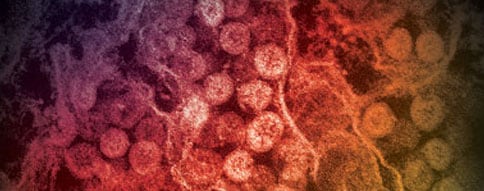What to know
- The criteria for diagnostic testing for MERS (included below) is also known as MERS Patient Under Investigation (PUI) criteria.
- Clinical features and epidemiologic risk factors are used in the United States to determine who should be tested for Middle East Respiratory Syndrome Coronavirus (MERS-CoV).
- Criteria for the diagnostic testing of PUI are based on the fact that MERS is not endemic or enzootic in the United States.
- If transmission of MERS-CoV within the United States is ever confirmed, criteria for who should be tested might change.

Considerations
Testing for MERS should occur as soon as possible following onset of illness. Earlier testing increases the likelihood of identifying a true positive test result.
All MERS diagnostic testing currently available in the United States is completed at CDC or at public health laboratories and is not available through clinical or commercial laboratories. To ensure proper coordination of testing and to avoid delays, clinicians should notify their local or state public health department and inform them that they are evaluating a patient who meets criteria for MERS testing.
Patients should be evaluated and discussed with jurisdictional public health departments if their clinical features and epidemiologic risk factors are concerning for MERS.
Contact the CDC Emergency Operations Center
Determining a testing approach
The below criteria serve as guidance for who should be tested for MERS-CoV infection.
| Clinical Features | & | Epidemiologic Risk |
|---|---|---|
| Severe illness:
Patient has fever and pneumonia1 OR fever and acute respiratory distress syndrome with no other more likely alternative diagnosis |
and ≥1 of the following epidemiologic risk factors | Within 14 days before symptom onset, a history of travel from countries in or near the Arabian Peninsula2
-or- Within 14 days before symptom onset, history of close contact with a person who themselves developed fever and acute respiratory illness within 14 days of residing in or travel to countries in or near the Arabian Peninsula -or- Within 14 days before symptom onset, a history of direct physical contact with camels3 in North, West, or East Africa4 -or- Is a member of a cluster of patients with severe acute respiratory illness of unknown etiology -or- High risk occupational exposure to MERS-CoV, such as laboratory or research personnel5 |
| Milder illness:
Patient has fever or symptoms of respiratory illness6 (e.g., cough and/or shortness of breath) with no other more likely alternative diagnosis |
and ≥1 of the following epidemiologic risk factors | Within 14 days of symptom onset, a history of being in a health care facility (as a patient, worker, or visitor) in a country or territory in or near the Arabian Peninsula where recent health care–associated cases of MERS have been identified
-or- Within 14 days of symptom onset, a history of direct physical camel contact3 in or near the Arabian Peninsula -or- Within 14 days of symptom onset, a history of close contact7 with a person with confirmed MERS-CoV infection while that person was ill -or- High risk occupational exposure to MERS-CoV, such as laboratory or research personnel5 |
1Pneumonia diagnosis may be based on clinical and/or radiographic evidence. Pneumonia may be severe (hospitalized) or less severe (non-hospitalized).
2Countries considered in or near the Arabian Peninsula include: Bahrain; Iraq; Iran; Israel, the West Bank and Gaza; Jordan; Kuwait; Lebanon; Oman; Qatar; Saudi Arabia; Syria; the United Arab Emirates (UAE); and Yemen.
3Direct physical contact could include touching, riding, hugging, kissing, grooming, or exposure to respiratory secretions but does not include consumption of cooked camel meat.
4Because the risk for MERS-CoV transmission from camels in North, West, and East Africa is not yet fully understood, consider MERS evaluation for travelers coming from these regions who develop severe respiratory illness within 14 days of direct physical camel contact.
5Diagnostic and research facilities that handle MERS-CoV should have established procedures instructing their staff in how to prevent and respond to occupational exposures. Laboratory exposure can occur through contact with infected animals and viral specimens without proper precautions and personal protective equipment (PPE).
6Symptoms of respiratory illness may include but are not limited to cough, shortness of breath, sore throat, and/or trouble breathing. Some people also get diarrhea, nausea, and vomiting in addition to respiratory symptoms. Please contact your state, tribal, local, or territorial (STLT) public health department if you have further patient questions.
7Close contact is defined as a) being within approximately 6 feet (2 meters), or within the room or care area, of a confirmed MERS patient for a prolonged period of time (such as caring for, living with, visiting, or sharing a healthcare waiting area or room with, a confirmed MERS patient) while not wearing recommended personal protective equipment or PPE (e.g., gowns, gloves, NIOSH-certified disposable N95 respirator, eye protection); or b) having direct contact with infectious secretions of a confirmed MERS patient (e.g., being coughed on) while not wearing recommended personal protective equipment.
